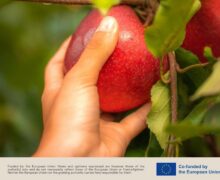Germany for more support to wildlife conservation in Tanzania

German Embassy in Tanzania has celebrated the Unity Day last week with commitment to strengthening wildlife conservation and tourism cooperation between the two friendly nations.
Full with vigour and fanfare, German Embassy staff, diplomats and invited guests from Tanzania and the Federal Republic of Germany joined the German Ambassador to Tanzania Dr. Detlef Waechter for a getting together party to mark the event.
The German Ambassador told his guests that his country, Germany, will be strengthening its support to Tanzania in wildlife and nature conservation in key wildlife parks, among the leading tourist attractive sites in Africa.
Dr. Waechter said that Germany will continue supporting Tanzania on development of historical sites, vital for tourism and cultural heritage.
Ranked as Tanzania’s traditional partner, Germany is supporting wildlife conservation projects in southern Tanzania’s Selous Game Reserve and Serengeti National Park in the northern tourist circuit. These two leading wildlife parks have been established by German wildlife conservationists.
Serengeti ecosystem and the Selous Game Reserve, two of the biggest conserved wildlife parks in Africa, have been the key beneficiaries of the German support for nature conservation in Tanzania up to this moment. These two parks are the biggest conserved wildlife sanctuaries in Africa.
Serengeti National Park, the oldest wildlife protected area in Tanzania was established in 1921 and later developed into a full national park through technical and financial support from the Frankfurt Zoological Society. The park was established by the famous German conservationist, the late Professor Bernhard Grzimek.
The German government has been funding improvements of roads, airstrips, and housing for game rangers within the Selous Game Reserve in Southern Tanzania. The German anti-poaching and wildlife conservation program in Tanzania is worth US$51 million, running from 2012 to 2016, including US$21 million for the Selous Game Reserve.
Germany has been a good source for tourists visiting Tanzania every year. The number of German tourists visiting Tanzania rose from 36,626 in 2012 to 57,643 last year.
Most attractive sites which pull Germans to Tanzania other than wildlife parks are the historical sites including the cultural heritage and historical sites and Mount Kilimanjaro climbing. In the same line, German companies rank among leading investors in Tanzania’s tourist sector.
KILIFAIR Promotion Company is a newcomer from Germany in Tanzania’s tourism through exhibitions targeting to promote Tanzania, East Africa and Africa, focusing to attract global tourists to visit this part of Africa.
KILIFAIR stands as the youngest tourism exhibition entity to be established in East Africa, but, had succeeded in making a record-breaking event by attracting a magnitude number of tourism and travel trade stakeholders to Africa.
In the same line, famous Tanzanian wildlife conservationist Mr. Gerard Bigurube has been nominated for this year’s edition of the German Africa Prize (Deutscher Afrika-Preis) to be bestowed to him by Dr Wolfgang Schäuble, the President of the Federal Parliament of Germany (Bundestag).
Mr. Bigurube, currently working as regional coordinator and Tanzania representative for the Frankfurt Zoological Society.
source: eTN




